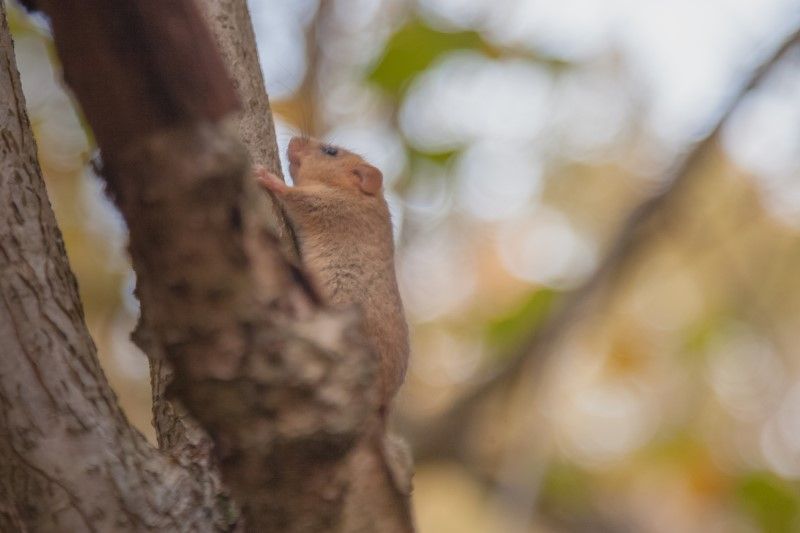Earlier this month, with the dormouse monitoring season almost over, I excitedly packed my wet weather gear and travelled to northern Germany. I was joining Björn Schulz, Sven Büchner and their families and friends to look for evidence of hazel dormice on the German/Danish border.
Finding evidence of dormouse in Germany
Germany, like all EU member states, is committed to reporting regularly on the status of key species of conservation concern, including dormice. Here in the UK, we’re lucky that hundreds of you, our volunteer monitors, collect the data with us through the National Dormouse Monitoring Programme (NDMP). Most other countries across the species’ range aren’t so lucky. Which means that data need to be collected by a handful of experts.
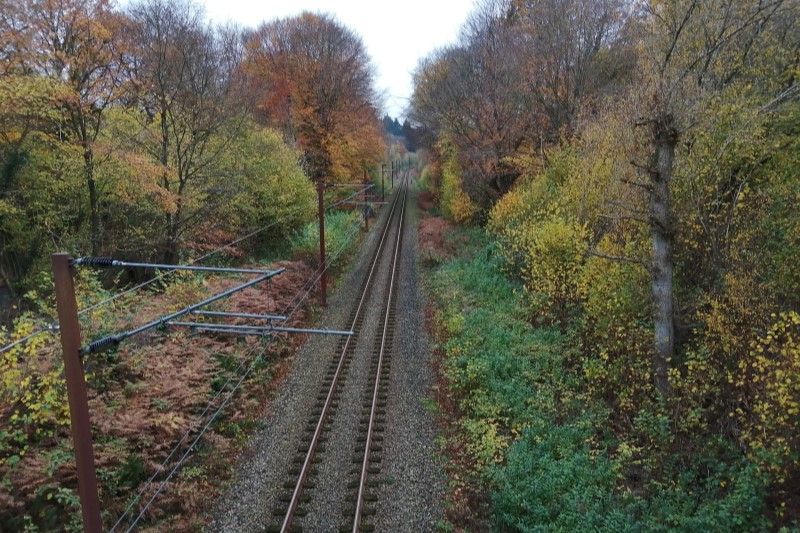
So, I set off to find out how they do it. Each autumn, Björn and Sven search several 10km grid squares, looking for signs of dormice. They focus on finding natural nests or hunting for chewed hazelnuts. This year the hazel trees and shrubs in Germany had barely produced any nuts, so we had to concentrate our searches on nests. We began by studying the maps, locating the grid squares with large tracts of woodland, particularly protected forest. Hazel dormice haven’t been found in this region for a long time, so the plan was to focus on the best habitat, and the areas with the most recent records. Then we split into teams and drove off.
Whose nest is whose?
Once in our grid square, we searched for the most likely spots favoured by dormice: well-connected, dense bramble, along the forest edges. Many of these sites, especially hedgerows bordering fields, were also home to harvest mice and I hadn’t appreciated how similar their nests are. Harvest mice weave their tiny homes from grasses and other suitable plants. And many of their nests are considerably smaller than an average hazel dormouse home. But some of their nests are a similar size and can also contain fresh, green leaves – usually, but clearly not always, a dormouse signature.
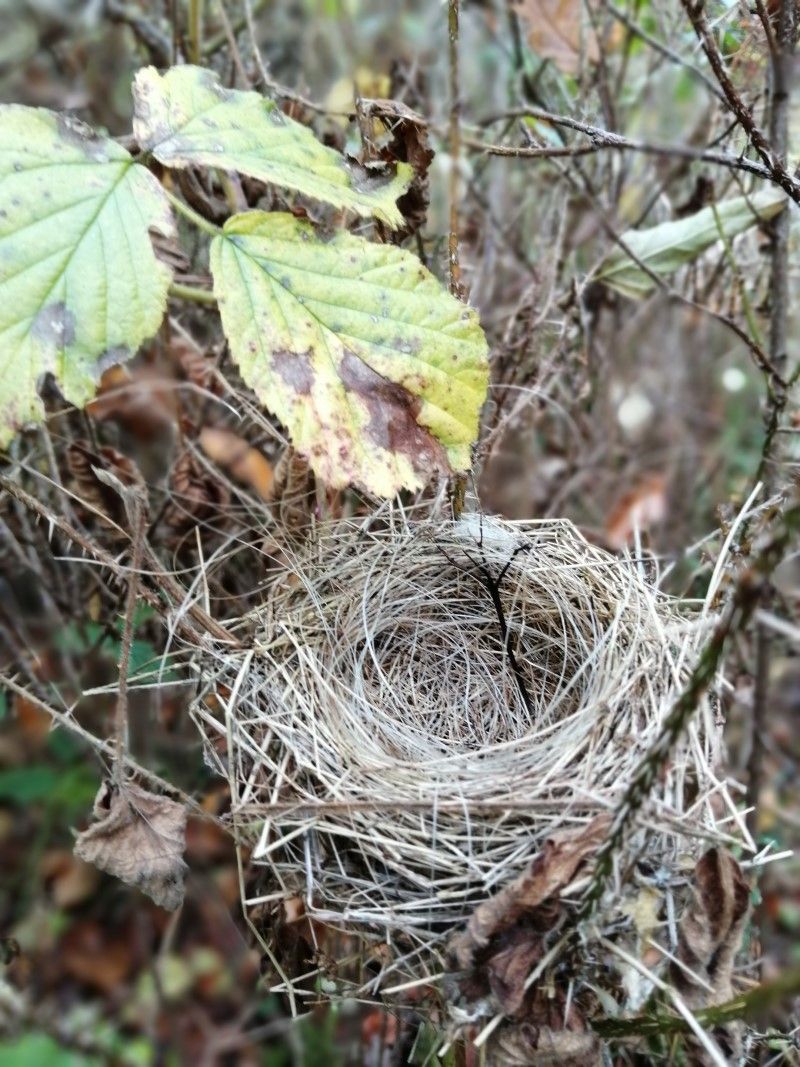
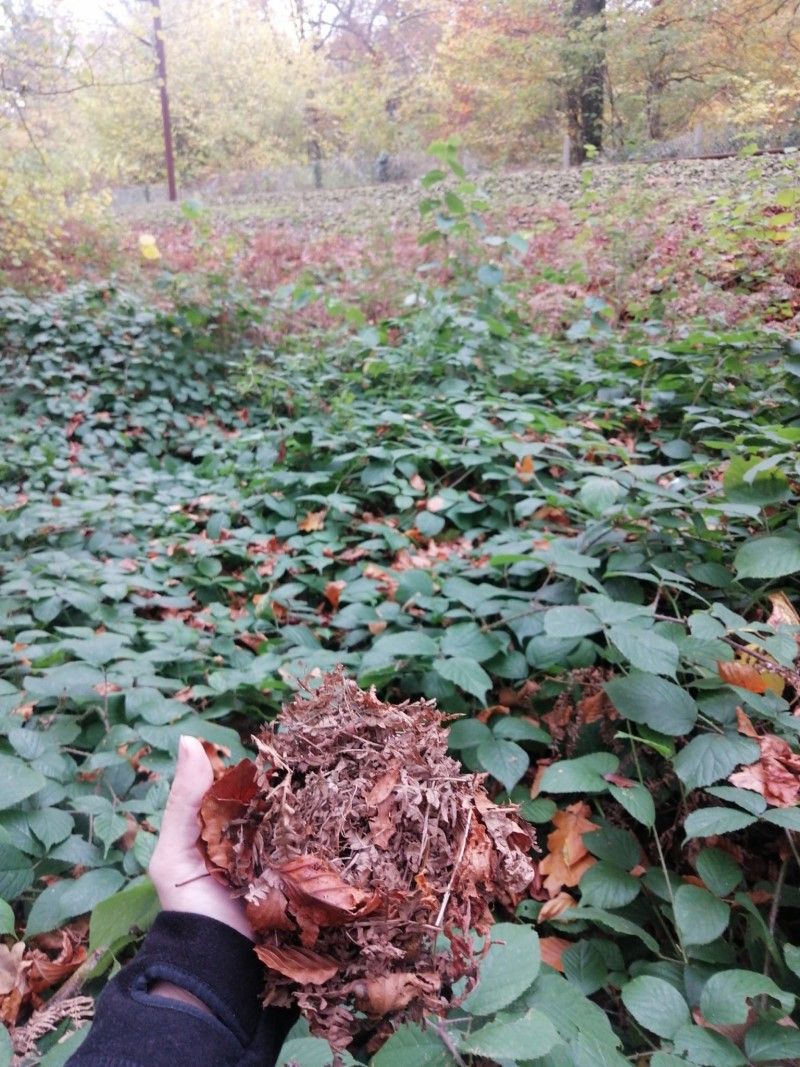
But there are subtle distinctions that can help decipher which animal lived there. Harvest mice nearly always weave grass stems into their nests. These stems anchor the nest in place, giving them security. This means if you try and remove the nest, it remains firmly attached to the structure it’s woven to. These tiny creatures also make the inside of their nests snug by lining the middle with very soft, chopped dry material – not something usually seen in dormouse nests.
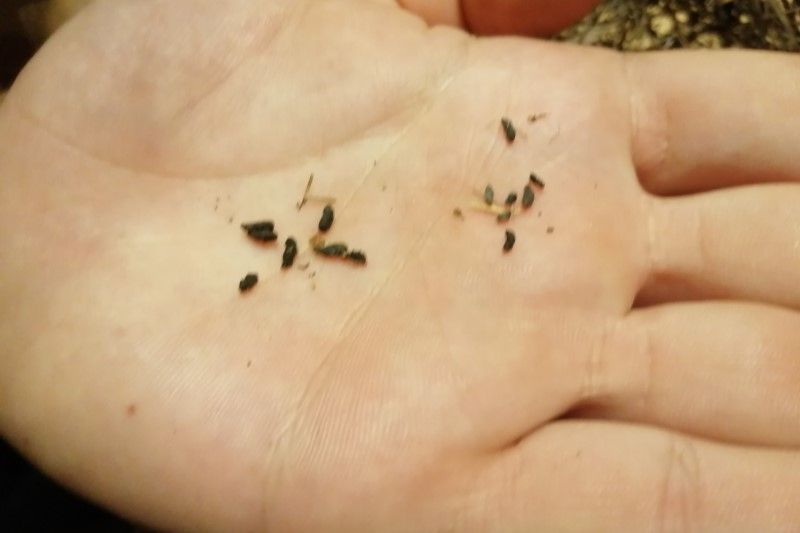
Occupants often also leave droppings – a handy calling card to tell who has been sleeping inside. When we found an old, empty nest, we could carefully remove it from the vegetation. A gentle shake over a bag released any droppings left in the nest. Later, back at base, we checked the droppings to see whether they were tiny, black and smooth (harvest mouse), larger and segmented (hazel dormouse) or larger and smooth (wood mouse or other small mammal species), or whether there was a mixture of droppings, suggesting multiple residents!
Timing is critical
Timing is critical when looking for natural nests. The best time to look is just when the leaves have fallen to the ground, leaving the distinctive, dark ball-shapes more visible. Winter weather can destroy exposed nests quickly so it’s best not to wait too long after autumn. Despite waiting until November, there were still plenty of leaves left on the trees, shrubs and brambles which meant that searching for nests was trickier than usual. Still, our three-day survey covered a lot of ground and resulted in a lot of data. Including the confirmation of dormice in an area they’d been declared lost from ten years earlier – a fantastic result. I’m looking forward to using my new survey skills here at home to see if I can find evidence of dormice this winter.
Written by Nida Al-Fulaij, PTES Conservation Research Manager

